

William Stopford
The cars axed in 2025 that we'll miss the most
15 Hours Ago
The Hyundai i30 N's mid-life update takes a great hot hatch and makes it faster, more accessible, and higher tech – for a price
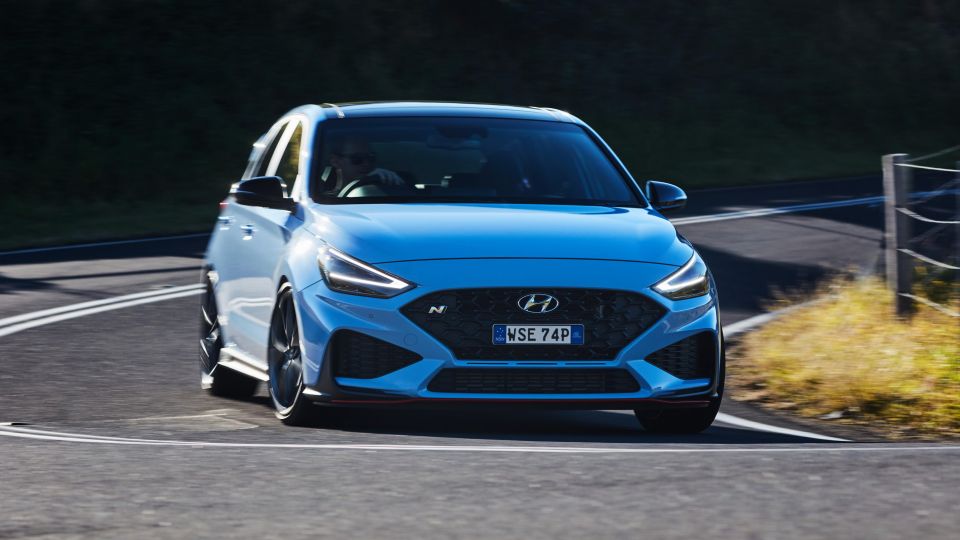
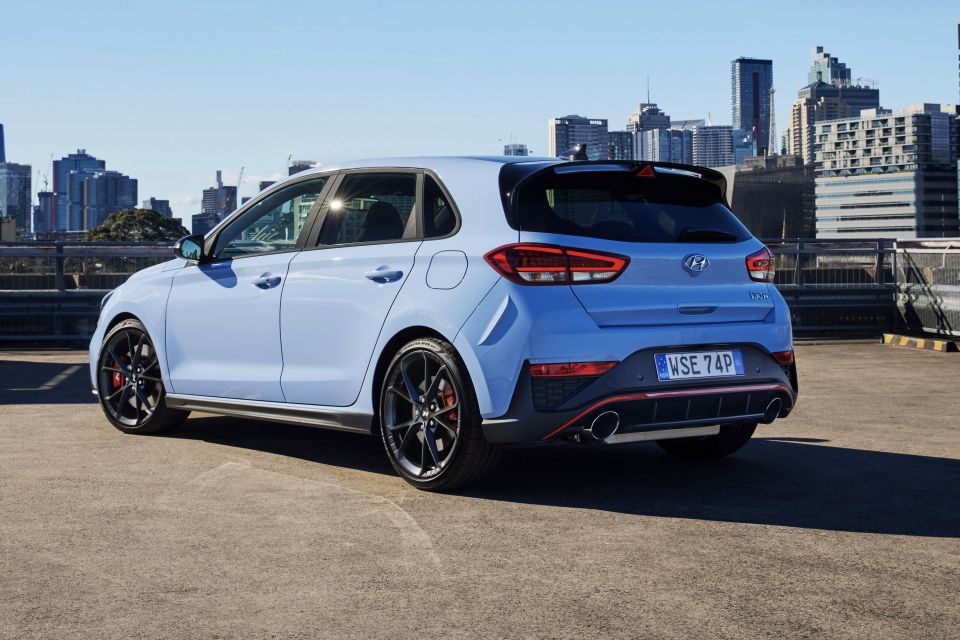

Senior Contributor
New from
$52,000
excl. on-roads

Senior Contributor
New from
$52,000
excl. on-roads


Senior Contributor
New from
$52,000
excl. on-roads

Senior Contributor
New from
$52,000
excl. on-roads
Quickly see how this car stacks up against its competition. Select any benchmark to see more details.
Where expert car reviews meet expert car buying – CarExpert gives you trusted advice, personalised service and real savings on your next new car.
The Hyundai i30 N was a game-changer for the brand when it launched from the blocks in 2017.
Here was a real performance hatch, sharpened at the Nurburgring under the leadership of Albert Biermann, ex-BMW M.
As intended, it went toe-to-toe with the Volkswagen Golf GTI, Honda Civic Type R, and Ford Focus ST. Australia became its third-biggest market behind the UK and Germany.
An impressive feat for a manual-only car. Now Hyundai widens the net by launching an eight-speed dual-clutch automatic option.
Moreover this iteration adds power and torque, tweaked suspension geometry, more exhaust bass, TCR-inspired new-look nose and tail designs, lighter alloys, and slick infotainment on a bigger display.
If you want a pocket rocket that’s capable of fire and fury, with some everyday liveability thrown in, this version really builds on the original’s hard work.

We’re driving the most expensive i30 N Premium DCT variant, at $52,000 before on-road costs (roughly $57,000 drive away). The N Premium is available as a manual for $49,000.
The range opens at $44,500 for the base i30 N manual and $47,500 for the i30 N DCT. You can delete the Premium’s sunroof in the manual and save $1500, but not with the DCT.
Considering the original was $39,990 it’s no longer the outlier bargain it was, but the range-topper still undercuts the Golf GTI.
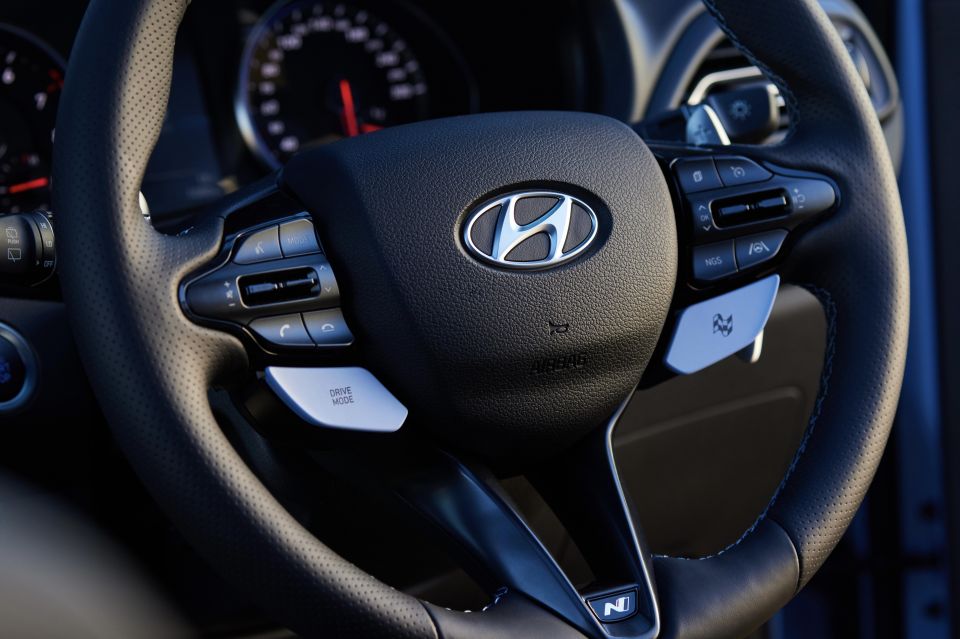
There are six colours including solid hues named Polar White, Shadow Grey, signature Performance Blue, and Engine Red.
Phantom Black mica and Dark Knight metallic are $495.
MORE: 2021 Hyundai i30 N price and specs

Buy your new car without the stress. It's fast, simple and completely free.

Great service from Travis and team, second time I have used this business would not hesitate to recommend them to anyone
Craig C.
Purchased a Ford Ranger in Sunshine Coast, QLD
CarExpert helped Craig save thousands on his Ford Ranger, now let us save you on your next new car.
Find a dealOn the outside there are new standard features such as forged 19-inch alloy wheels, LED puddle lights, power-folding side mirrors, and a proximity key.
You also get Pirelli P-Zero tyres, tyre-pressure monitoring, and dusk-sensing LED headlights. Note also the trick triangular tailgate spoiler-mounted brake light.
New features inside include the bigger 10.25-inch touchscreen with navigation, and a wireless smartphone charger. Familiar ones include the leather wheel, cloth bucket seats, climate control, Apple CarPlay and Android Auto, and DAB radio.
N Premiums add fixed-headrest bucket seats trimmed in leather and Alcantara, heated seats and steering wheel, front parking sensors, rain-sensing wipers, rear privacy glass, and an auto-dimming rear-view mirror.
MORE: 2021 Hyundai i30 N price and specs
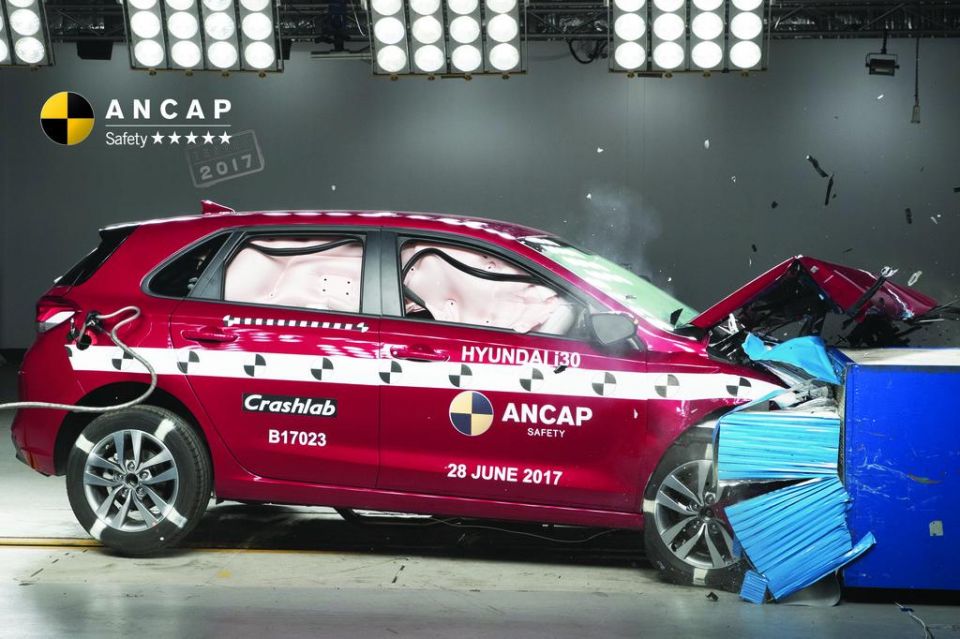
There are seven airbags, rear seat ISOFIX and top-tether attachments, forward autonomous emergency braking, a driver monitor, and active lane-keeping assist.
New features include blind-spot monitoring and rear cross-traffic alert, plus a lane-following assist function. It’s good to see Hyundai fit the two former systems with the update, in particular.
Oddly, there’s no active cruise control, just passive.
Crash tester ANCAP awarded mainstream Hyundai i30 variants (the N is not covered) five stars in 2017, and a score of 35.01 out of 37.
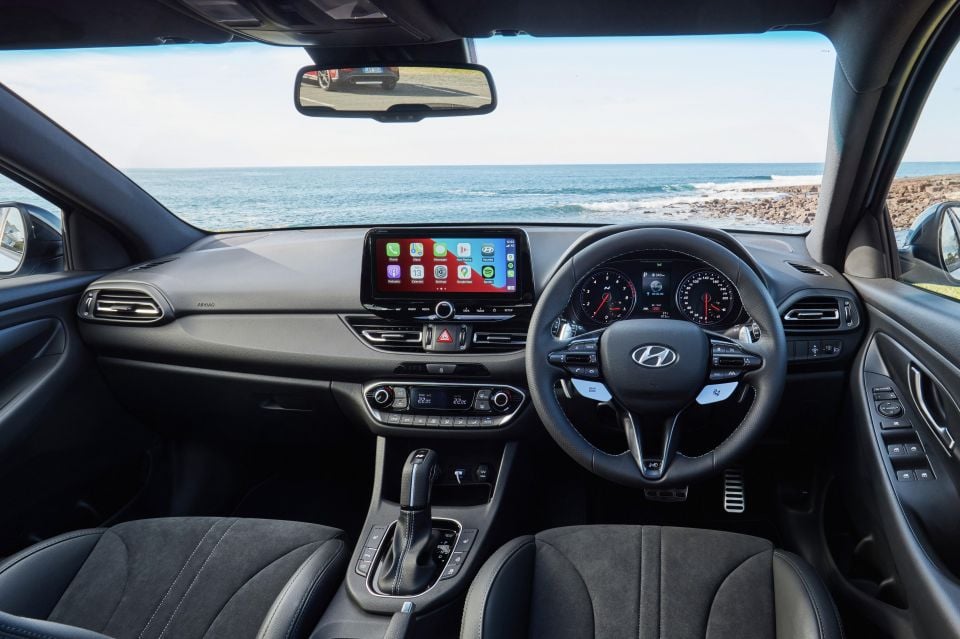
What’s changed? That 10.25-inch touchscreen takes up more dashtop real estate, has nicer graphics and what feels like slicker processing.
The home menu is full of easy-to-understand icons taking you to the N Performance settings menu; Sounds of Nature page for when you feel like listening to birdsong, waves or a log fire; navigation, and various media.
There are also clear buttons on the wheel, and on the dash for ventilation control and volume. In any driver’s car you appreciate function overtaking form. There’s a pull-up hydraulic handbrake too.
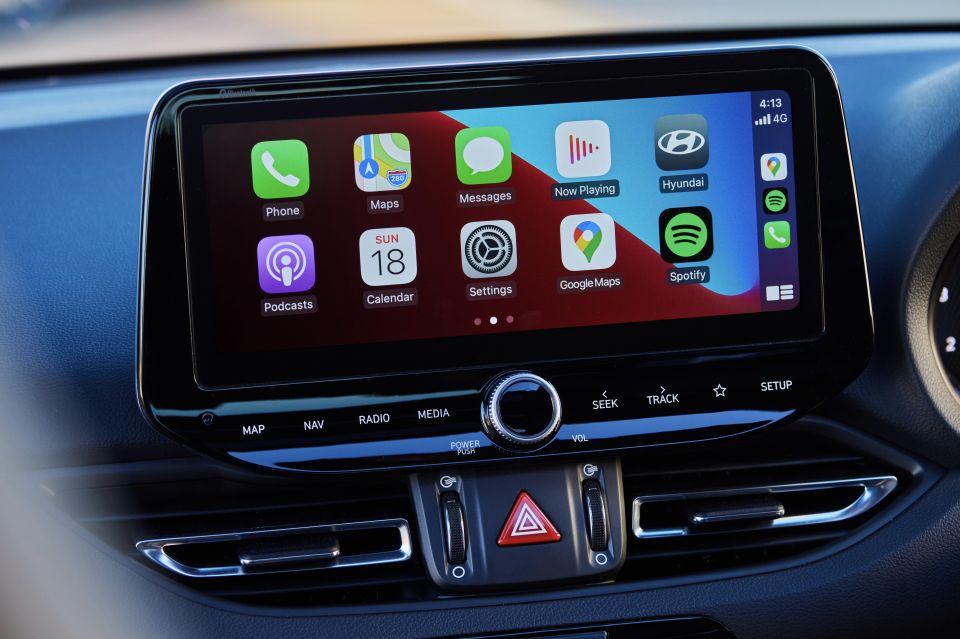
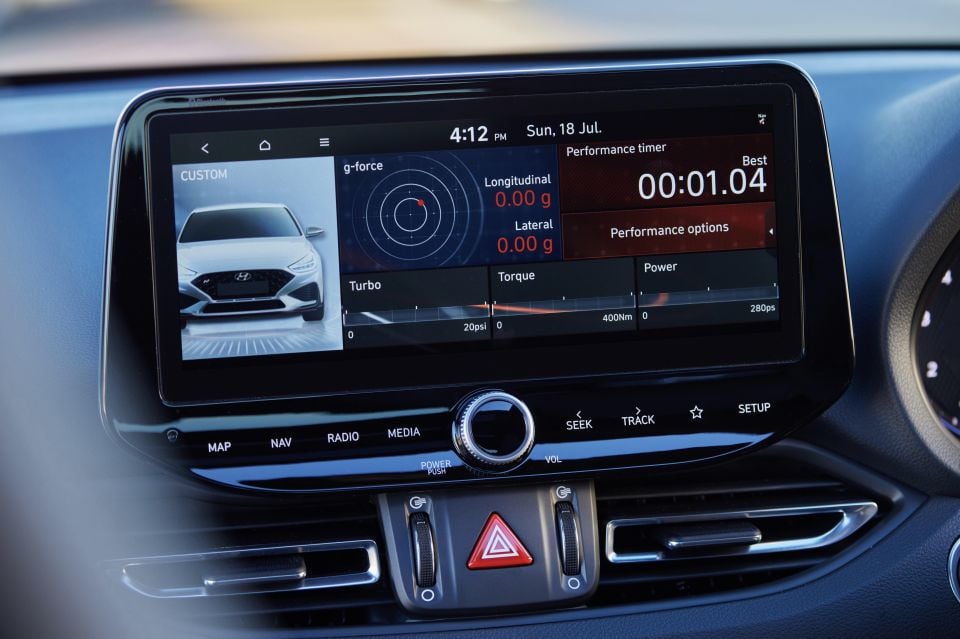
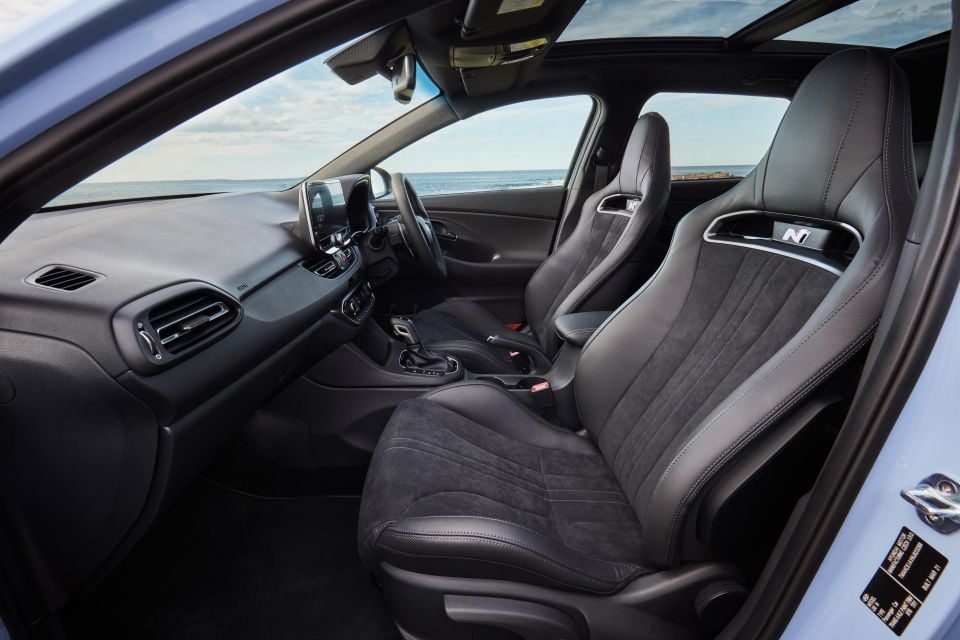
The N Premium’s new one-piece Alcantara and leather seats offer good lateral side and under-thigh support, the nice steering wheel has a breadth of adjustment, and the instruments including trip computer with shift-timing indicator are concise.
Hyundai has attempted to glam up the interior beyond the shmick new screen with silver vent inserts, blue stitching on the wheel, and the requisite alloy pedal caps. But there are still lots of drab dark trims.
The panoramic glass sunroof improves the ambience. But this sort of roof often impacts weight, stiffness (though in this case, note the bracing behind the back seats), and headroom for taller or helmet-wearing drivers.
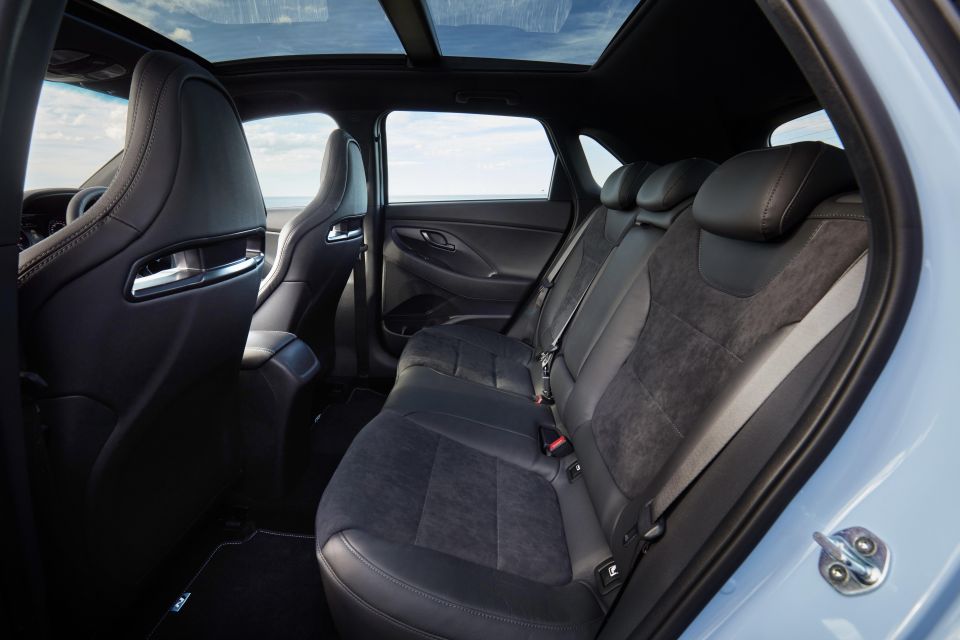

If I were speccing my ideal i30 N it would probably be a DCT N Premium on account of the better seats, but sans sunroof – except Hyundai Australia doesn’t offer that combination.
The back seats are decent for a small hatchback in terms of legroom, with space for two adults or three kids if need be.
The boot capacity is 381 litres, while with the back seats folded down this grows to 1287L.
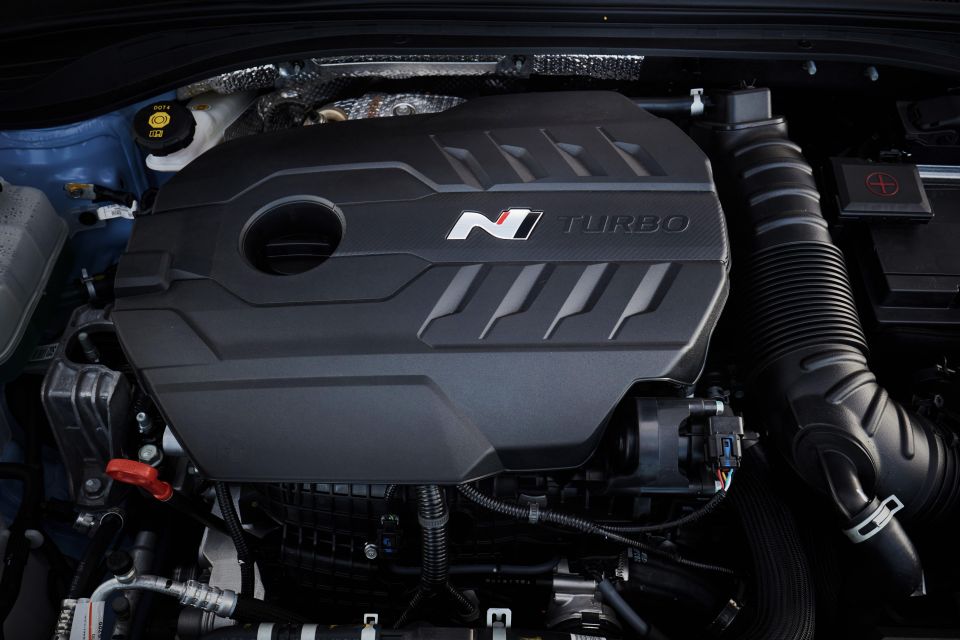
Outputs are up 4kW and 39Nm, to 206kW (at 6000rpm) and 392Nm (between 2100 and 4700rpm) – thanks to a redesigned turbocharger. Hyundai also touts new machining that strengthens the engine’s block.
The upgraded 2.0-litre turbo four drives the front wheels through an electro-mechanical limited-slip diff, and its bark is controlled by the multi-mode active exhaust which is capable of bringing some theatrics.
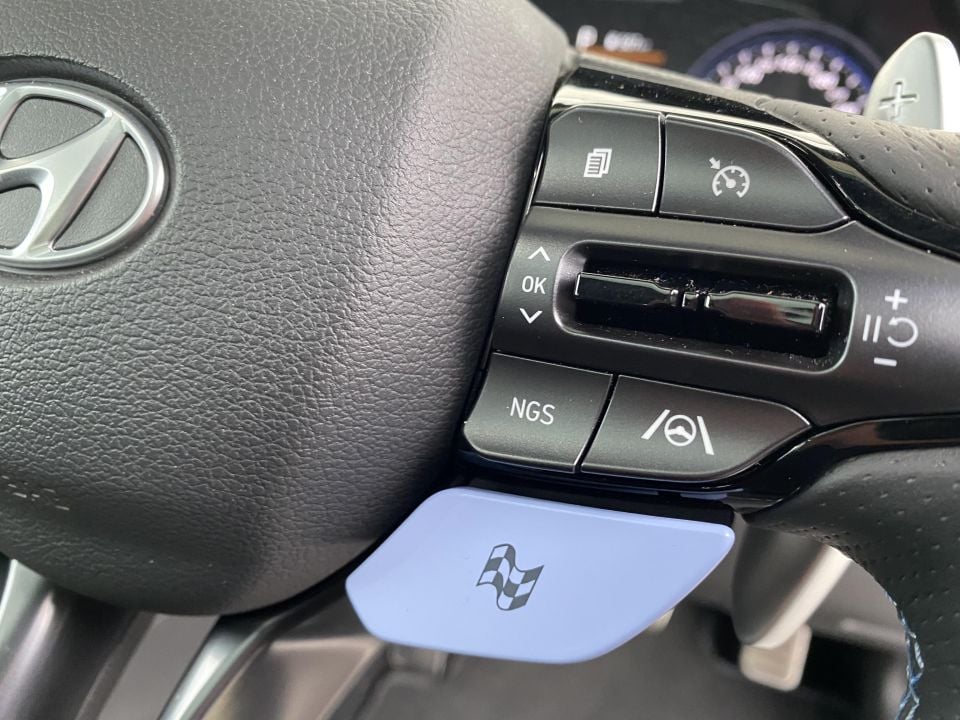
The six-speed manual gearbox remains, but is joined by the eight-speed wet dual-clutch auto with switchable anti-creep, paddles on the wheel, and a selector with motorsport shift logic: you pull it backwards to upshift manually.
The DCT brings various performance functions not available in the manual, the headline act being the N Grin Shift button which releases maximum power and an ultra-aggressive shift pattern for 20 seconds.
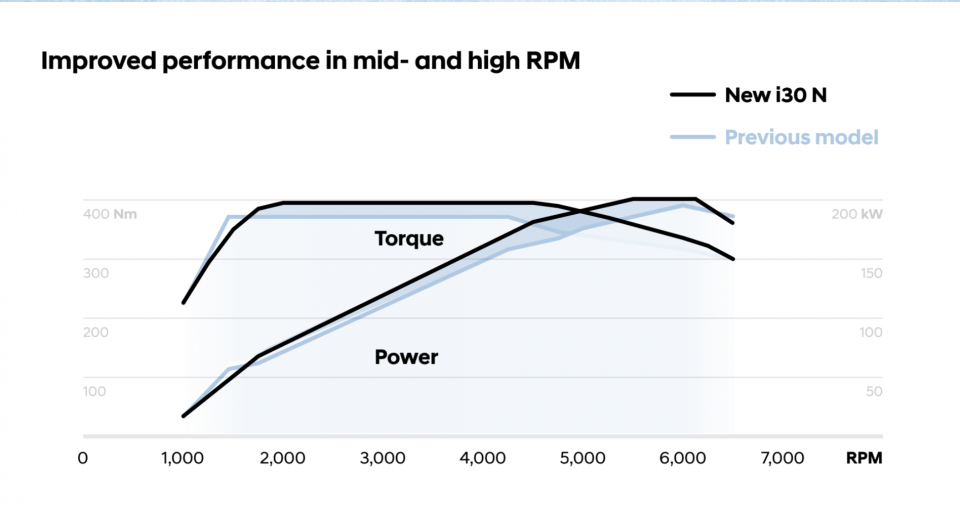
Manuals are 0.2 seconds quicker than the old model to 100km/h (5.9 seconds), but as has become the norm the DCT is quicker again at 5.4 seconds. That’s despite a 33kg weight impost.
Not that it’s a focus, but the DCT also brings neither fuel economy losses or gains. All i30 N hatchbacks use a claimed 8.5L/100km combined-cycle consumption figure using 95 RON premium unleaded. The tank is 50L.
I sat at 10L/100km, but wasn’t driving like Grandpa.
| Engine | 2.0-litre turbo four |
|---|---|
| Power | 206kW @ 6000rpm |
| Torque | 392Nm @ 2100-4700rpm |
| 0-100km/h | 5.4s (DCT) or 5.9s (manual) |
| Transmissions | 6-MT or 8-DCT |
| Driven wheels | Front |
| Diff | Electro-mechanical LSD |
| Kerb weight | 1541kg |
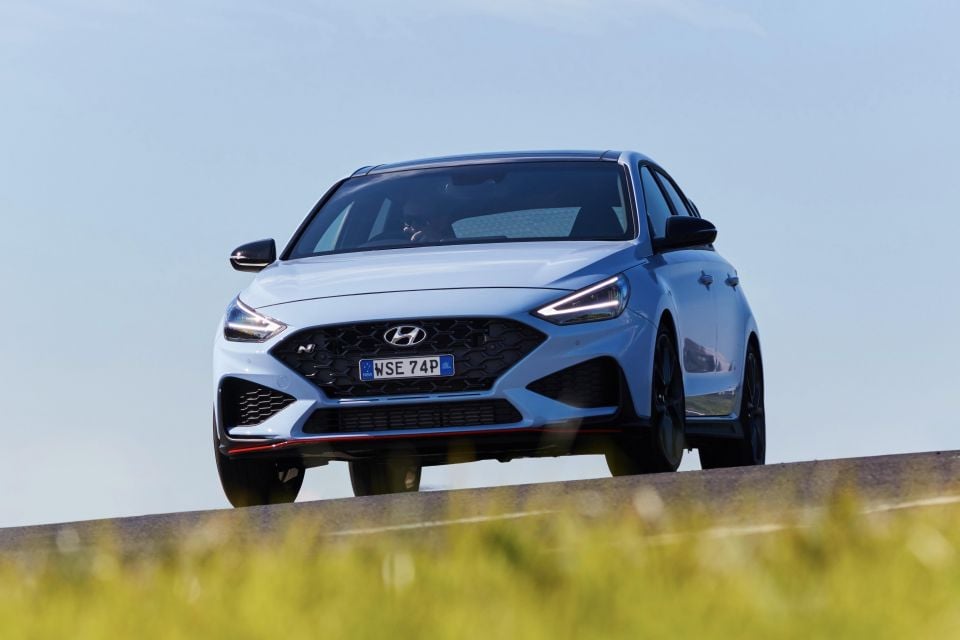
When our performance editor, World Rally Championship hotshoe Chris Atkinson, took the original i30 N for some track time he came away mostly effusive with praise, but with some feedback for the update.
More mid-range power and more laterally supportive seats were two requests. As was a DCT to really make sure you were getting everything out of the engine – even at the potential expense of DIY engagement.
These areas of feedback have here been considered and addressed, which suggests Hyundai N really understands performance enthusiasts. Better, the enhancements go well beyond massaging areas of weakness.
The engine has more pull than before as the sprint times show (which you can also see for yourself using the onboard sprint timer function), and is largely free from lag even as the bigger turbo spools.
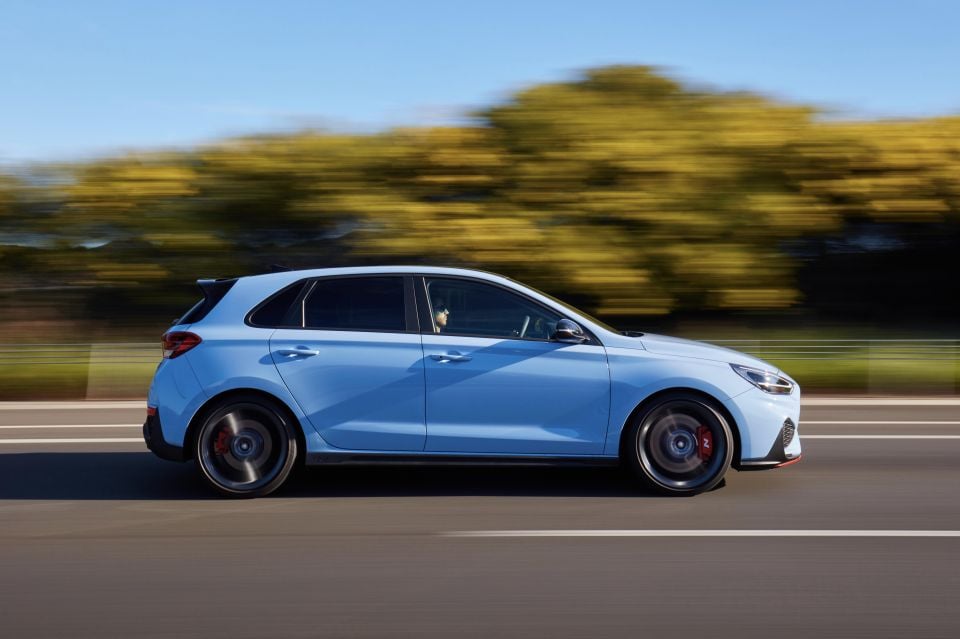
It has a broad spread of torque, though it needs higher engine speed than before to get to peak. The comparative curves show the new engine is still giving maximum outputs when the old engine was losing puff.
I love the racket it makes, too. The active variable exhaust has three settings: neighbour-friendly Normal, and two levels of Sport that amp up the burble at idle, and elicit all manner of antisocial ‘tatatats’ and crackles.
The DCT accommodated decisive darting into traffic gaps while in daily use, and really didn’t elicit much low-speed hesitation unless you went out of your way to find it.
In harder driving it offers aggressive jolting upshifts and rapid double downshifts in corners, and in the Sport and Sport+ settings it’ll hang onto gears longer, keeping the engine on the boil.
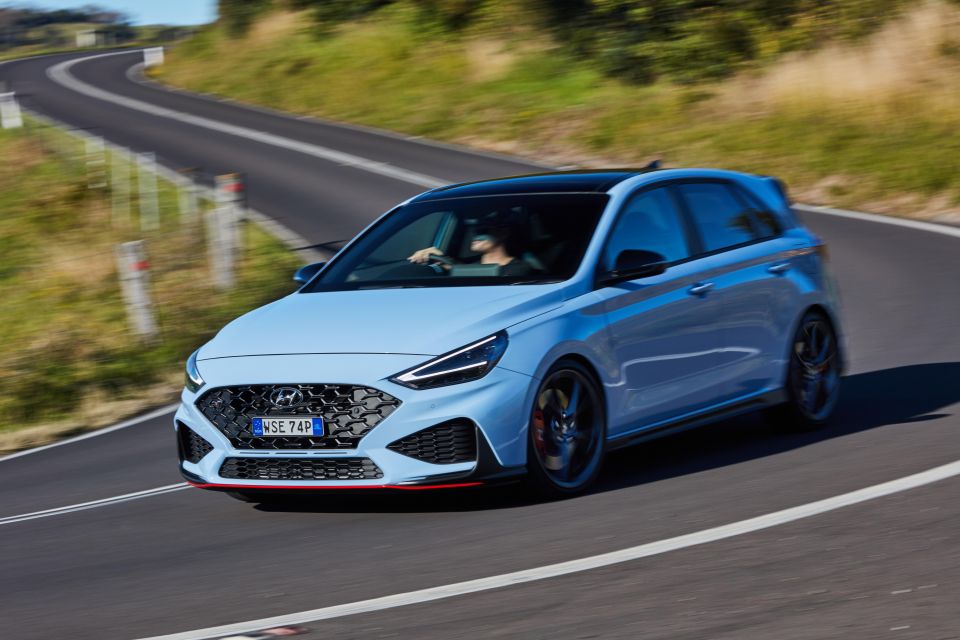
Where expert car reviews meet expert car buying – CarExpert gives you trusted advice, personalised service and real savings on your next new car.
When you’re using more than 90 per cent throttle, as you will on a straight or between distant corners, a function engages which reduces torque drop-off during shifts, which naturally makes acceleration feel all the more relentless.
It has more closely stacked ratios and can shift faster than any human, even though the manual by contrast wins when it comes to physical engagement.
I never got tired of the hilarious N Grin Shift function, either. Press the little ‘NGS’ button on the wheel and the drivetrain provides maximum power for 20 seconds, counted down in the instruments. It’s a sports mode with extra theatre.
That front differential gets the power down effectively without noteworthy axle-tramping, and amplifies traction off-corner. The bespoke P Zero rubber helps too, as too does the additional 0.9 degrees of negative camber on the front wheels.
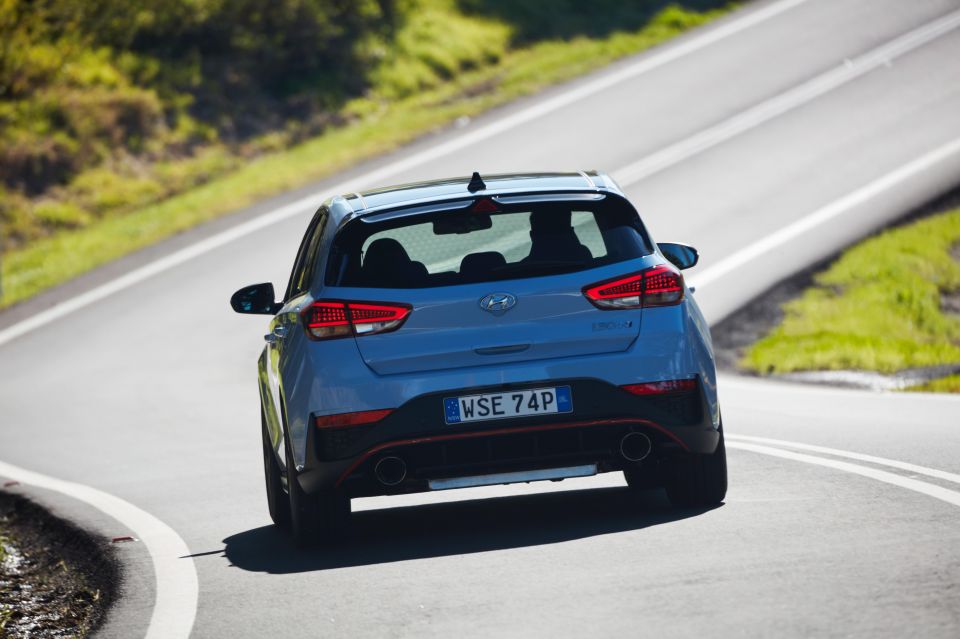
It’s tough to get to the point where push understeer becomes an issue, and the steering via the ergonomically satisfying wheel remains pleasingly resistant and direct. It’s worth noting the new forged alloy wheels save 3.6kg per corner.
The suspension has been given various hardware changes beyond the geometry, with 5.7 per cent higher front and 4.2 per cent higher rear spring rates, new front knuckle and low control arms, and new rear toe arm.
In software terms, Hyundai Australia fettled with stability control parameters and specified the three levels of active damping – the middle Sport setting does the trick on patchy twisted roads, Normal is ideal for urban commuting.
We never really drew fault with the old i30 N’s brakes in terms of pedal feel, stopping power, and fade resistance. Yet the in-house setup benefits from bigger front rotors (360mm, up from 345mm) clamped by red calipers.
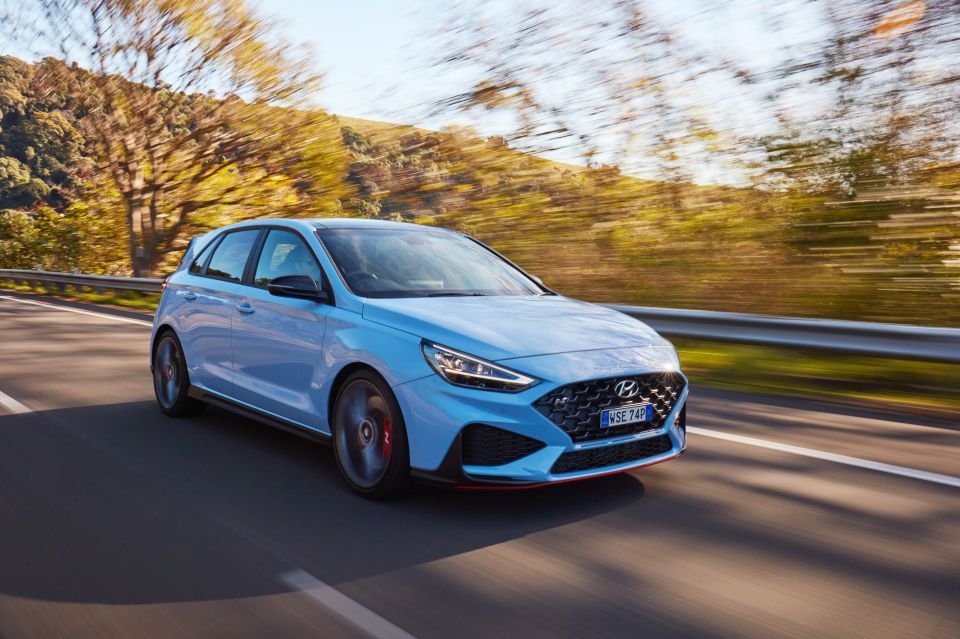
Perhaps the most novel aspect of the i30 N is the sheer breadth of configurability. It remains a single vehicle with multiple personalities, all of which feel purposeful and thought out – and altogether more evolved than before.
You can mix and match the engine response, e-LSD force, active exhaust amplification, traction control aggressiveness, ride quality, and steering resistance across all manner of permutations.
You also interface with the car in various other cool ways, from the aforementioned ‘NGS’ button the wheel, to the twin blue plastic paddles on each spoke that shortcut you to various pre-set driving profiles, to the onboard g-force meter and turbo gauge in the dash.
It’s hard to find too many grievances with the driving performance of the i30 N, aside from its noise, vibration and harshness (NVH) suppression – it could isolate you from tyre roar more effectively.
You won’t care when you’re flat-stick and carving up corners though.
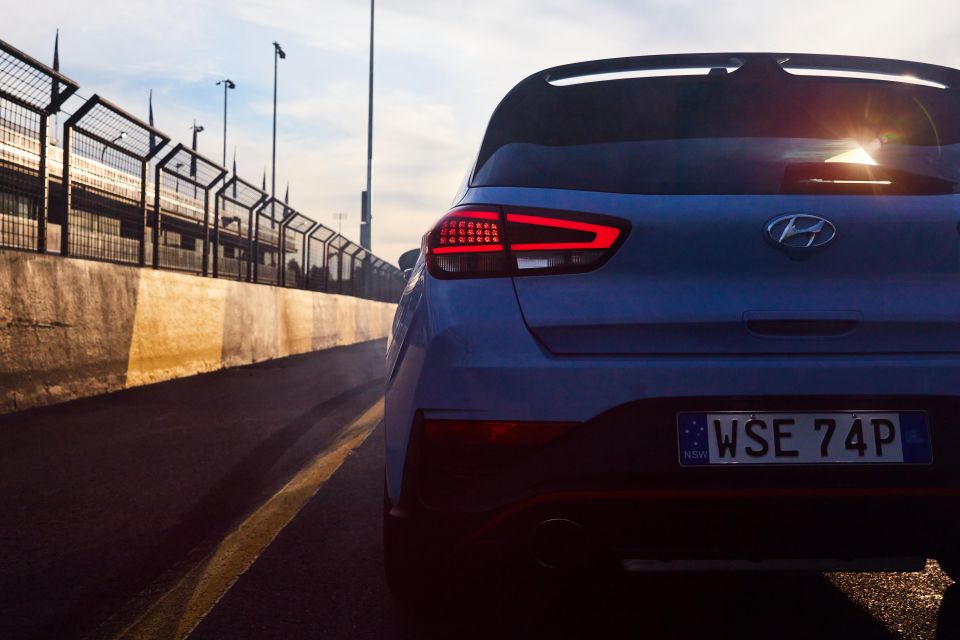
All Hyundais come with a five-year, unlimited-kilometre warranty which, in the case of the i30 N, covers a limited range of track activities but not timed competition or racing.
It must be serviced either once a year or every 10,000km.
We’ve contacted Hyundai for pricing which will be revealed shortly – you can pay as you go or buy an upfront servicing plan.
Update: Each of the first five services are $335, equalling $1675.
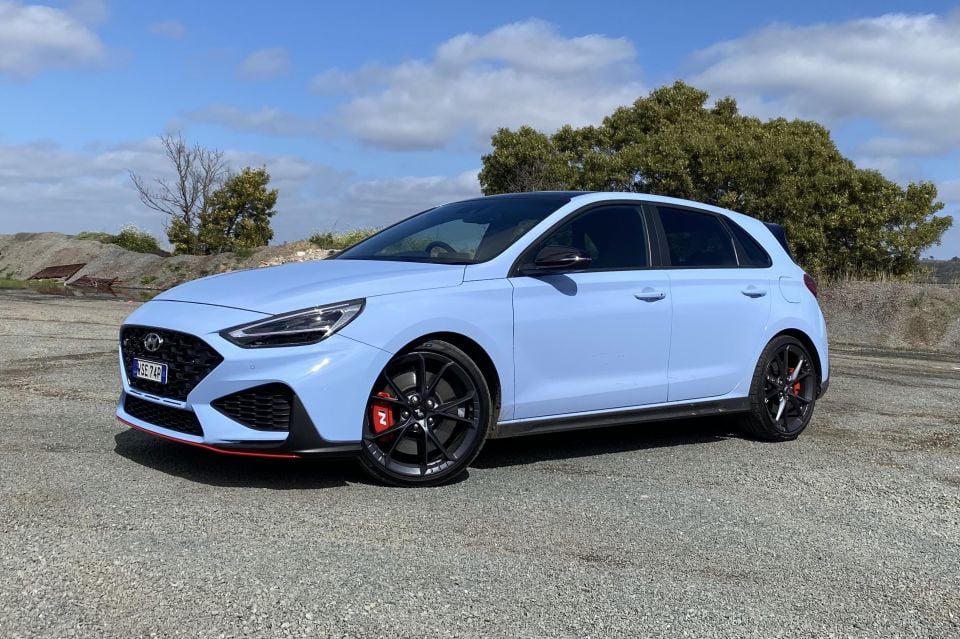
This is a good update to a great car.
Yes it’s a more expensive beast than it was a few years ago, but the DCT and new turbo unlock more pace, the dynamic enhancements are worthy, the interior technology more up to date, the active safety credentials enhanced.
More enthusiasts than ever can now opt for the Hyundai, and anyone after a top-shelf hot hatch should really consider it.
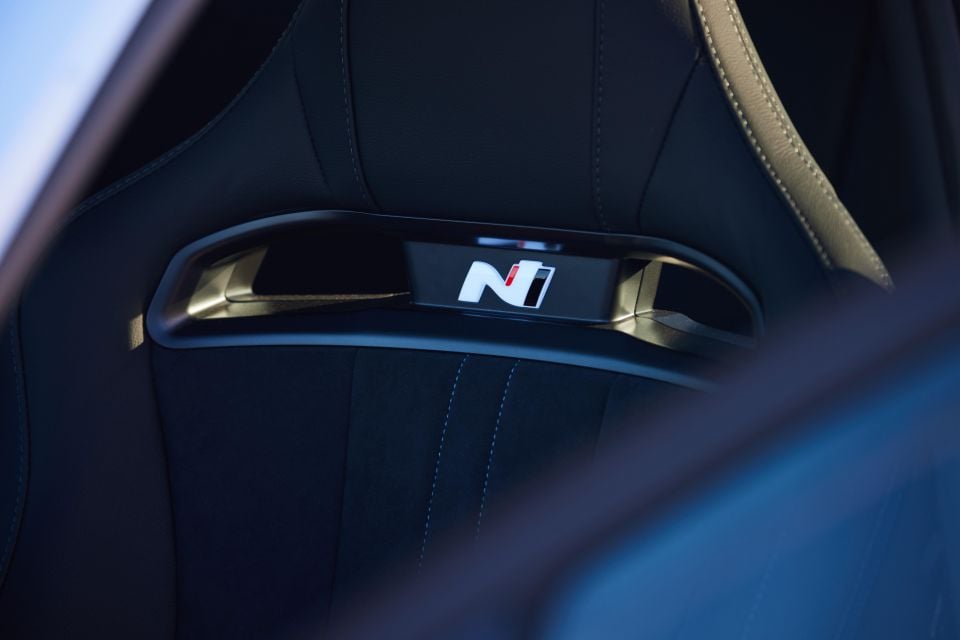
Click the images for the full gallery
Where expert car reviews meet expert car buying – CarExpert gives you trusted advice, personalised service and real savings on your next new car.


William Stopford
15 Hours Ago


Matt Campbell
23 Hours Ago


William Stopford
2 Days Ago


CarExpert.com.au
5 Days Ago


Max Davies
6 Days Ago


Damion Smy
6 Days Ago